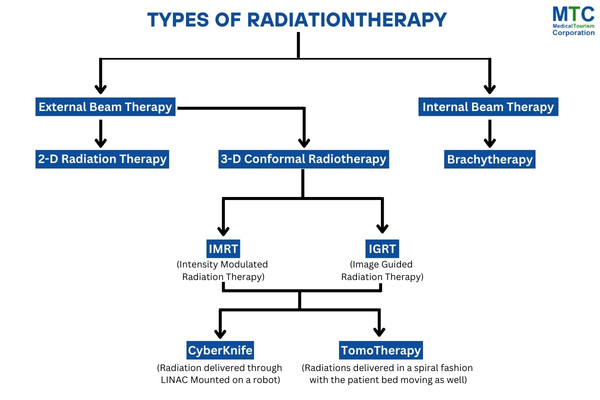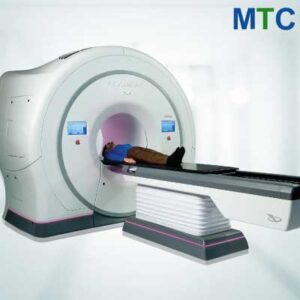Medically Reviewed By: Dr. David Warmflash (MD), Dr. Shelley Janssen (MD)
Cancer Treatment with TomoTherapy in India: All About Cost, Procedure & Specialists
Explore TomoTherapy, a new-age radiation therapy in India to fight Cancer. Our comprehensive guide will take you through prices, oncology specialists and procedure for TomoTherapy in India.
Join us as we navigate through TomoTherapy and show you comparative studies on how it benefits global audiences.
What is the Cost of TomoTherapy in India
Cost of TomoTherapy in India ranges from USD $6,500 whereas the cost of Tomotherapy in the US is over $20,000.[1]
Research indicates that Most radiation techniques are cost-effective including TomoTherapy, with a range of 88% - 99% cost effectiveness.
| Cost of the Tomotherapy | Number of sessions included in the cost | Time taken per session | Recovery Time after each session |
| USD$6500 | 24- 30 session (normally 24) | 25-30 minutes | Instant recovery (very little side-effects) |
*Number of sessions and recovery time is subject to each patient.
Let's look at the cost of different types of radiation treatments.
Read Overview Section to know more about the type of radiation therapies and its evolution.
| Treatments | Cost in India (in USD) | Cost in US (USD) |
| 3D Conformal Radiotherapy | $4000 | Starts at $17,000[2] |
| Cyberknife | $5,500 | $25,000 [3] |
| TomoTherapy | $6,500 | Starts at $20,000 |
| IMRT | $7,000 | $20,000 - $26,000[4] |
*Prices are subject to change
TomoTherapy which uses Intensity Modulated Radiation Therapy (IMRT) could be more expensive as compared to conventional 3D or 2D methods but has greater success rate and can be more cost effective.
Find details below in Comparative Studies.
Procedure: TomoTherapy in India
Our medical advisors work tirelessly to make International patients' journeys seamless and comfortable.
From arrival in India to finishing the procedure and returning home, here is the patient’s treatment timeline.
| Session Information | Duration |
| Overall stay for sessions | 6 weeks |
| Minimum number of session | 24 days |
| Session needed for advanced stage | 30 days |
| Session frequency | 5 times a week |
Here are the 3 steps that happen on each session:
Prior to treatment, the oncologist uses 3D technology to take a CT scan of the patient’s tumor. The CT scan determines the shape and exact location of the tumor, even if the tumor moves slightly.
Through IMRT (Intensity-Modulated Radiation Technology), radiation is delivered to the patient in a spiral fashion. During this time, the patient's bed also moves in sync with the radiation machine.
The whole system allows a larger area of the tumor to be targeted in less time and with high accuracy. Each session takes 25-30 minutes.
Once the session is complete, the doctor observes the patient for any side effects. The patient returns back for subsequent sessions, ranging between 24-30 in total.
An Overview on TomoTherapy: The Next-Big Thing in Radiation Therapy
TomoTherapy is an advanced radiation treatment that helps fight cancers by using high-intensity radiation beams that destroy the cancerous tumor while avoiding the healthy cells nearby.[5]
Evolution of TomoTherapy
In the battle against cancer, the landscape of radiation therapy has evolved significantly.
- Earlier oncologists used conventional two-dimensional imaging techniques, which utilized plain film X-rays to locate and target cancerous cells. Later, the field of oncology embraced the power of three-dimensional technology.
- Enter 3D CRT, a game-changing procedure allowing oncologists to visualize tumors in three dimensions. 3D CRT uses radiation beams, administered through LINAC, to meticulously target and destroy cancerous growths.[6]
- Dosage Specific Radiation: IMRTis the new-age technology that uses 3-D images and advanced computer programs to target a tumor using multiple high radiation beams and precise dosages. This therapy only affects the tumor and preserves nearby organs.
- CyberKnife: One of the most popular ways of providing radiation therapy in the recent past. CyberKnife uses IMRT to deliver radiation through a lightweight linear accelerator mounted on a robotic arm.
- A testament of Innovation: TomoTherapy, combines the precision of IMRT and IGRTto target tumors with unparalleled accuracy. Unlike 3D-CRT or CyberKnife, TomoTherapy's advanced technology spiral around the patient,targeting the tumor from multiple angles. This treatment ensures maximum tumor destruction while sparing healthy tissue.[7]
- Position sensitive technology: Sometimes cancerous tumors move within the body. To mitigate the risk of targeting healthy tissues, TomoTherapy treatment involves 3D scanning of the tumor prior to each session.
Find out some of the benefits of using TomoTherapy.
Benefits of using TomoTherapy over conventional radiation therapy
The groundbreaking TomoTherapy treatment represents a major advancement in cancer care, offering patients better results and reduced side effects. Discover some key benefits with us:
Higher Precision: Radiation beams in TomoTherapy precisely target the cancerous area. The accuracy of the technology minimizes collateral impact on nearby tissues and organs.
Accuracy: TomoTherapy uses Image Guided 3D technology before each procedure to assess for minor changes in tumor size, shape and location.
Reduced Side Effects:The highly precise radiation therapy uses multiple beams to destroy only the cancer cells, causing less damage to the nearby tissues and ultimately reducing side-effects.
Reduced Treatment Time: The spiral movement of the beams around the patient covers more area in less time. In addition, the patient’s bed movement ensures less time spent in a single session.
Success rate of TomoTherapy in India
The Success rate of TomoTherapy in India is estimated to be between 72% - 85%. Studies published in Indian Journal of Cancer shows that Helical TomoTherapy achieved 85% success rate in Metastasis-free cancer (Made the cancer Non-fatal), and 72% in overall survival rate.[8]
Read below to know about studies that have shown the success and effectiveness of TomoTherapy.
TomoTherapy session in progress
TomoThearpy machine with patient
Comparative Studies: TomoTherapy vs CyberKnife and Other Radiation Therapies
- CyberKnife is a robot-mounted linear accelerator delivering precise radiation, whereas TomoTherapy provides helical movement, thousands of beams, advanced accuracy, targets moving tumors efficiently..
- Between CyberKnife and Helical TomoTherapy, studies showed better precision to destroy cancer cells by using Tomotherapy as compared to the usage of CyberKnife.[9]
- Results published in Precision Radiation Oncology, online library, showed significantly decreased risk to other healthy organs while using TomoTherapy as compared to other forms of IMRT radiotherapy.[10]
- For Brain Cancer, TomoTherapy has proven to be more effective as compared to RapidArc, which is another IMRT and IGRT based radiation therapy.[11]
- In an in-depth research, different types of radiation therapies were compared. TomoTherapy proved to be more effective than external beam therapy, Rapid Arc, conventional IMRT and 3D conformal radiotherapy.[12]
Cancer types treated using TomoTherapy
TomoTherapy uses high intensity radiation beams that can target the cancer tumor in the body. Some of the cancers that TomoTherapy can treat are:
- Prostate Cancer
- Head and Neck Cancer
- Breast Cancer
- Lung Cancer
- Brain Cancer
Best Doctor for TomoTherapy in India: Get Quality Treatment to Fight Your Cancer

Dr. Deepak Kumar Mittal( BLK-Max Super Speciality Hospital )
Dr. Deepak Kumar Mittal is a top specialist in Radiation Oncology in India.
He is skilled in cranial SRS and SBRT and advanced radiation technologies like IMRT and IGRT.
He is experienced in brachytherapy, which treats various cancers. His past roles include senior resident at Delhi State Cancer Institute and Rajiv Gandhi Cancer Institute.
Education
GSVM Medical College, Kanpur
Memberships
- Association of Radiation Oncologists of India (AROI)
- Delhi Medical Council (DMC)
Best Hospital for TomoTherapy in India

JCI-accredited, it is one of the largest private hospital. It ranks among the top 10 multi-specialty hospitals.
Dedicated services for medical tourists from over 100+ countries.
It serves local and international patients, specializing in orthopedic treatments, cancer, bariatric surgery, and cardiology with advanced, European-standard equipment.
- 60+ Years of Experience
- JCI Accredited
- NABH Accredited
North India’s first next-generation Integrated Image-guided Intensity-modulated radiation therapy.
Trilogy Tx Linear Accelerator
State-of-the-art technology, world-class facilities and a highly experienced team Radiation Oncologists.
Dedicated tumour board at playing a critical role in multidisciplinary Cancer Care.
Unparalleled healthcare services led by internationally renowned specialists.
BLK Max Super Speciality hospital has next generation Image-guided Intensity-Modulated Radiation Therapy, Integrated CT Scanner, precise and effective 3D Image guidance and offers fewer side effects.
Find India’s first and most advanced system for Cancer treatment at BLK Max hospital.
Is TomoTherapy in India Safe?
Yes, TomoTherapy in India is usually safe and effective, as per studies conducted by doctors in India and globally.[13]. As mentioned above, TomoTherapy in India also showed an overall survival rate of 72%.
Conclusion
Tomotherapy has caused a revolutionary advancement in cancer treatment, providing accurate targeting of tumors while minimizing damage to surrounding healthy tissue.
Its complex and high-end technology, treats hard-to-find cancers in less time with more accuracy. Using multiple radiation beams that conform precisely to the tumor's shape, TomoTherapy ensures minimal side effects. Today, Tomotherapy stands as a beacon of hope in the fight against cancer, offering better results to patients.
FAQ
Patients sometimes could feel side effects after the treatment. Our partner hospitals monitor each patient closely to see and treat any side effects they may have. Side effects could include. Nausea Fatigue Skin irritation Hair loss Diarrhea or bladder issues Dry mouth, eyes and throat
Each TomoTherapy session takes around 20-25 minutes. In case the cancer is more advanced, the treatment session could also take 30 minutes.
References
- National Library of Medicine: Cost-effectiveness analysis of advanced radiotherapy techniques for post-mastectomy breast cancer patients
- Science Direct: The cost effectiveness of 3D conformal radiation therapy compared with conventional techniques for patients with clinically localized prostate cancer
- Value-Based Cancer Care: CyberKnife Cost-Effective in the Long-Term
- BMC Springer Nature: The cost effectiveness of intensity-modulated radiation therapy and three-dimensional conformal radiotherapy in the treatment of head and neck cancers
- National Cancer Institute: External Beam Radiation Therapy for Cancer
- National Library of Medicine: Comparison of IMRT versus 3D-CRT in the treatment of esophagus cancer
- National Cancer Institute: TomoTherapy
- Indian Journal of Cancer: Results of radiotherapy in squamous cell laryngeal cancer
- International Atomic Energy Agency: Comparison of Helical tomotherapy and Cyberknife in Spine Radiosurgery
- Wiley Online Library Precision Radiation Oncology: Dosimetric comparison between helical tomotherapy and intensity-modulated radiotherapy for esophageal carcinoma
- Journal of Nuclear Medicine and Radiation Therapy: Comparison of TomoTherapy and RapidArc in Hippocampus Sparing Brain Radiotherapy in Pediatrics
- Science Direct: Tomotherapy for cranio-spinal irradiation
- National Library of Medicine: Use of tomotherapy in treatment of synchronous bilateral breast cancer: dosimetric comparison study






